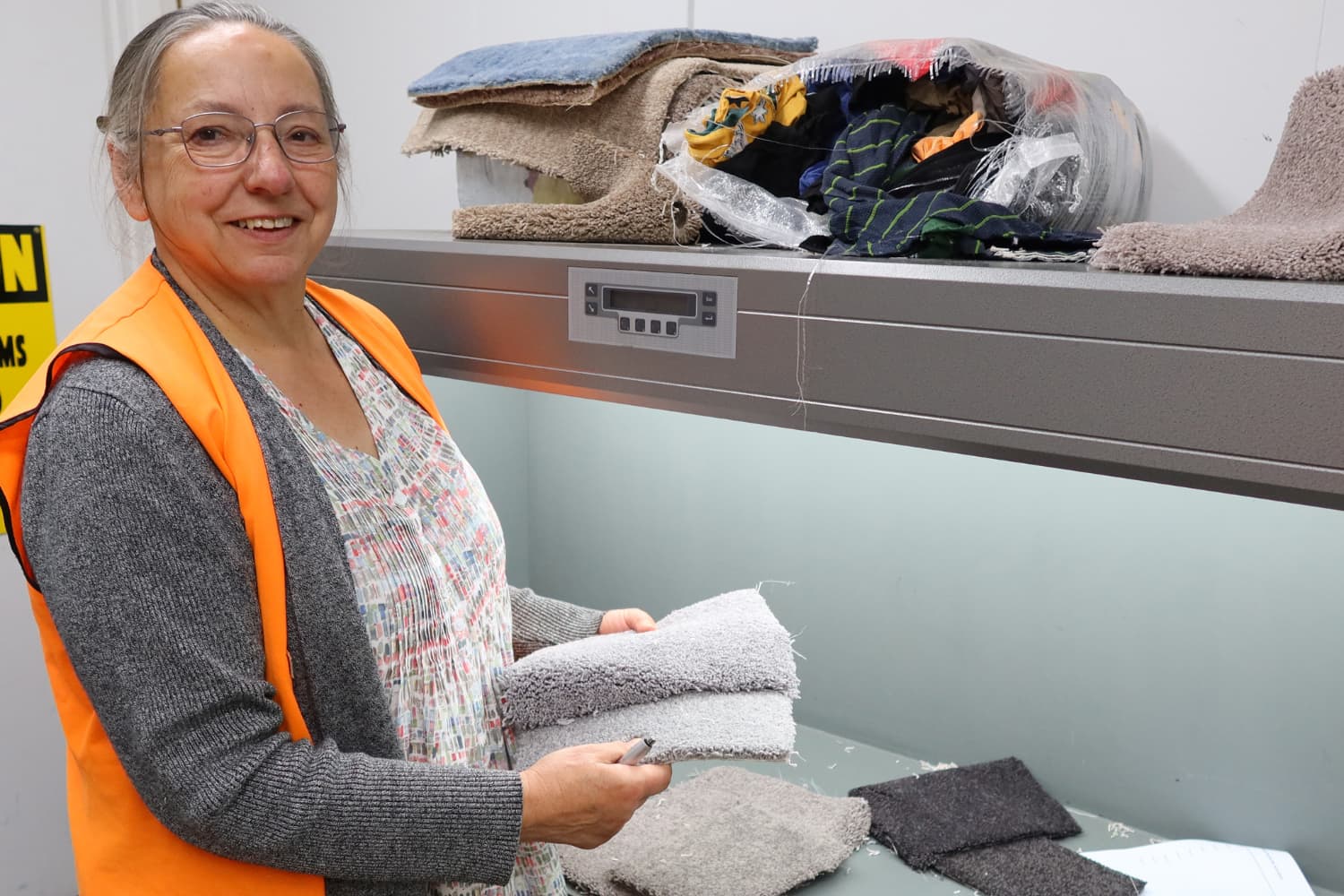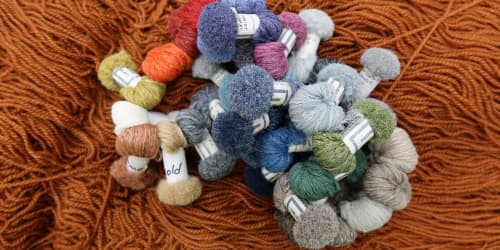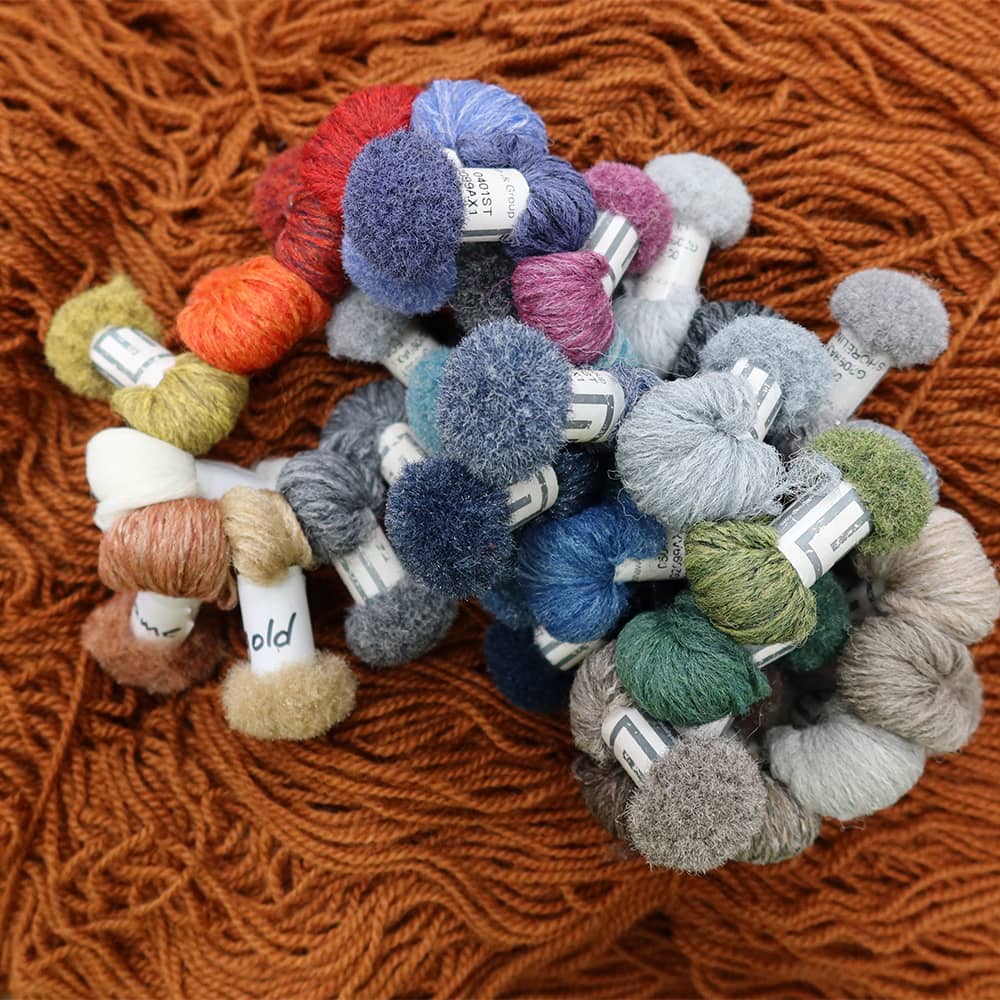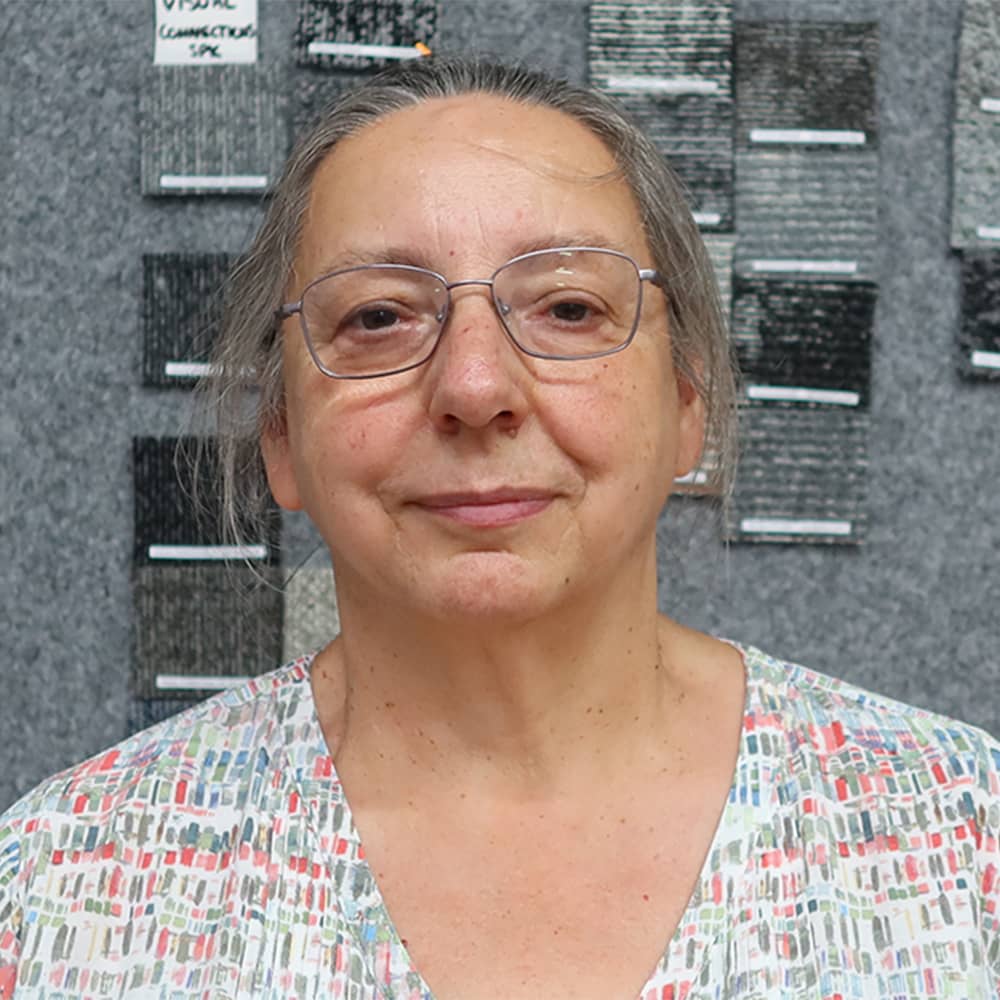Faces of Local Manufacturing: Rosie Cicak, Plant Colourist
With more than three decades of experience and a keen eye for detail, Rosie Cicak has been shaping the colour story of Godfrey Hirst carpets since the late 1980s. As our Plant Colourist, Rosie brings together science, creativity, and a deep understanding of manufacturing to ensure every shade we produce not only looks beautiful - but works in production too.
Rosie first joined Godfrey Hirst full-time in 1988, after spending weekends working in Spinning and Twisting while completing her Bachelor of Science in Chemistry. Her early years were spent in the Dyehouse, developing and matching new colours for Product Development - a hands-on role that would lay the foundation for her long and varied career across quality control, product development, and colour forecasting.
“In those early years, I worked across the Dyehouse and Spinning, doing a mix of lab work and colour matching,” Rosie recalls. “I also spent time with Benalla Spinners as their go-between, managing scheduling, quality control, and dispatch. It gave me a real understanding of how all the pieces of manufacturing fit together.”
In 2003, Rosie stepped into the role of Plant Colourist, helping bridge the gap between creative forecasting and practical manufacturing. At the time, there was a growing need to better align colour forecasting with the operational realities of the yarn banks. Rosie’s role was introduced to ensure that the creative direction could be achieved efficiently in production, strengthening the link between design intent and manufacturing capability.
Rosie then took on both roles - and she’s been steering the colour direction of our products ever since. Today, she works closely with colleague Yeli to develop new palettes, refine existing ones, and ensure that our colours reflect both current market demand and long-term design trends.
“My role involves problem solving every day,” Rosie says. “I’m constantly putting together ranges that will sell in our market, while also understanding where the raw materials come from to make the product at the optimal cost to the business.”





